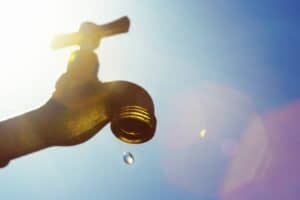South Africa faces a daunting sanitation backlog, particularly in rural areas and informal settlements, despite improvements.

South Africa is still facing more than 26 years of sanitation backlog, especially in rural areas and informal settlements, according to the Water Research Commission.
This has worsened due to slow economic growth, floods and dilapidated infrastructure.
Despite Statistics SA saying four of every five households in South Africa had access to piped water and seven of every 10 households had flushing toilets, experts in the field say in 2023, these numbers should be higher, considering the pool of solutions brought to the table.
The 2022 census report showed improvements in water access, with only 8.7% of households having no access to piped water, while a further 8.9% had access to piped water at a community stand or outside the yard.
No progress in eradicating bucket toilets
The data also showed flushing toilets in households had increased from 51.9% in 2001 to seven of every 10 in 2022.
However, no progress had been made in eradicating bucket toilets, which remained at 2.1%.
The report also noted that there was progress in reducing pit toilets without ventilation from 19.3% in 2011 to 12.5% in 2022.
The International Water Association, the Water Research Commission and Amalooloo brought various organisations together to compare and analyse some of the best non-sewered sanitation solutions for different areas, following years of research.
ALSO READ: Major bummer: Getting to the bottom of Ladysmith’s 15-toilet mystery
They looked into Enviro Loo’s work on a clear sanitation treatment plant – a new-generation, closed-circuit, 100%-recycling sanitation system – and its dry toilet system, as well as Prana Water and Sanitation’s Aquonic wastewater treatment and the generation-two reinvented toilet (G2RT) among others, all solutions that might work effectively, given the current state of infrastructure.
The Water Research Commission’s project manager, Akin Akinsete, said, since 1994, the government had noted its dream to install flushing toilets in all households. However, that dream was never realised and it eventually had to fall back on chemical toilets and pit latrines in some areas.
“Now, we have a backlog of even removing chemical toilets – which were meant to be used at construction sites and events – and replacing pit latrines,” he said.
“Over and above that, there are other challenges and emerging threats, like climate change.
South Africa is water-scarce
“South Africa is a water-scarce country, and the flushing system has proved to be a problem because it requires a lot of water and energy.
“Energy (is) used to push waste from households to a centralised place to treat it and to bring water back to the house. That affects two crucial things, which the country is having trouble maintaining.”
He said that was the main reason why South Africans and the government needed to consider other solutions, to accommodate factors affecting the standard of sanitation in the country.
“We are suggesting non-sewer sanitation as the solution, which is basically a facility that can safely contain the toilet waste, treat it, recover resource and whatever is discharged is safe to release into the environment,” he added.
ALSO READ: Camps Bay and Sea Point water woes could continue for two more weeks
“It makes it easier to have the toilet closer to where the waste is generated, reducing the amount of water and energy, while providing people with proper sanitation without any additional costs.”
The department of water and sanitation’s Andre van der Walt acknowledged that 14.2 million households still did not have access to proper sanitation, but more than 84% did have access, as of 2021.
“The millions who still do not have access to proper sanitation is not a good look because where we currently do have services, we seem to not be paying much attention,” he said.
“We would love to see more attention (paid) to operations and maintenance, so the gains we have made we do not lose because we are not properly budgeting for operations and maintenance.”
Catch up with the latest celeb news from The Citizen on WhatsApp by following our channel. To join, click here.






